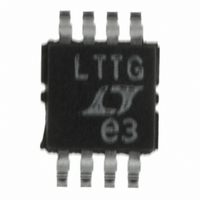LTC1966CMS8#PBF Linear Technology, LTC1966CMS8#PBF Datasheet - Page 13

LTC1966CMS8#PBF
Manufacturer Part Number
LTC1966CMS8#PBF
Description
IC PREC RMS/DC CONV MCRPWR 8MSOP
Manufacturer
Linear Technology
Datasheet
1.LTC1966CMS8.pdf
(32 pages)
Specifications of LTC1966CMS8#PBF
Current - Supply
155µA
Voltage - Supply
2.7 V ~ 5.5 V
Mounting Type
Surface Mount
Package / Case
8-MSOP, Micro8™, 8-uMAX, 8-uSOP,
Operating Temperature (max)
85C
Operating Temperature (min)
-40C
Pin Count
8
Mounting
Surface Mount
Package Type
MSOP
Case Length
3mm
Case Height
0.86mm
Screening Level
Industrial
Lead Free Status / RoHS Status
Lead free / RoHS Compliant
Available stocks
Company
Part Number
Manufacturer
Quantity
Price
APPLICATIO S I FOR ATIO
DESIGN COOKBOOK
The LTC1966 RMS-to-DC converter makes it easy to
implement a rather quirky function. For many applications
all that will be needed is a single capacitor for averaging,
appropriate selection of the I/O connections and power
supply bypassing. Of course, the LTC1966 also requires
power. A wide variety of power supply configurations are
shown in the Typical Applications section towards the end
of this data sheet.
Capacitor Value Selection
The RMS or root-mean-squared value of a signal, the root
of the mean of the square , cannot be computed without
some averaging to obtain the mean function. The LTC1966
true RMS-to-DC converter utilizes a single capacitor on
the output to do the low frequency averaging required for
RMS-to-DC conversion. To give an accurate measure of a
dynamic waveform, the averaging must take place over a
sufficiently long interval to average, rather than track, the
lowest frequency signals of interest. For a single averaging
capacitor, the accuracy at low frequencies is depicted in
Figure 6.
Figure 6 depicts the so-called “DC error” that results at a
given combination of input frequency and filter capacitor
values
the output is fed to a circuit with an inherently band-limited
frequency response, such as a dual slope/integrating A/D
converter, a
meter.
–0.2
–0.4
–0.6
–2.0
–0.8
–1.6
–1.8
–1.0
–1.2
–1.4
0
2
1
. It is appropriate for most applications, in which
C = 4.7 F
C = 2.2 F
C = 10 F
A/D converter or even a mechanical analog
U
U
C = 1.0 F
W
Figure 6. DC Error vs Input Frequency
U
C = 0.47 F
INPUT FREQUENCY (Hz)
10
2
therefore easy to trim or calibrate out. The “Error Analyses” section to follow discusses the effect
of static error terms.
However, if the output is examined on an oscilloscope with
a very low frequency input, the incomplete averaging will
be seen, and this ripple will be larger than the error
depicted in Figure 6. Such an output is depicted in
Figure 7. The ripple is at twice the frequency of the input
because of the computation of the square of the input. The
typical values shown, 5% peak ripple with 0.05% DC error,
occur with C
If the application calls for the output of the LTC1966 to feed
a sampling or Nyquist A/D converter (or other circuitry
that will not average out this double frequency ripple) a
larger averaging capacitor can be used. This trade-off is
depicted in Figure 8. The peak ripple error can also be
reduced by additional lowpass filtering after the LTC1966,
but the simplest solution is to use a larger averaging
capacitor.
This frequency-dependent error is in additon to the static errors that affect all readings and are
C = 0.22 F
Figure 7. Output Ripple Exceeds DC Error
AVE
ACTUAL OUTPUT
WITH RIPPLE
f = 2
RIPPLE
20
PEAK
(5%)
= 1 F and f
f
INPUT
PEAK RIPPLE
DC ERROR +
ERROR =
(5.05%)
C = 0.1 F
PEAK
TIME
INPUT
(0.05%)
ERROR
DC
OUTPUT
IDEAL
= 10Hz.
OF ACTUAL
AVERAGE
OUTPUT
50
DC
1966 F07
60
LTC1966
sn1966 1966fas
13
1966 F06
100













